Motorola Droid X: Thoroughly Reviewed
by Brian Klug on July 20, 2010 4:27 PM EST- Posted in
- Smartphones
- Motorola Droid X
- OMAP
- Mobile
Meet the Droid X
The X is big, eXtreme, even. In many ways, the X is Motorola’s EVO, sans 4G. Both pack 4.3 inch screens, but no keyboard. In fact, the X is slightly taller than the HTC EVO by 5.6 mm on paper (127.5 for the X, 121.9 for the EVO), which itself is impressive. That’s not to say it’s unusably large, or that the size is a problem, but it’s a big phone that commands big pockets.
Everything about the X seems like it can be followed up with a “that’s what she said.” The thing’s size, performance, how long it lasts - on battery of course. Seriously, you can mentally add that onto so many sentences, it seems as if the EVO and X are both answers to the proverbial question “why not?”
In reality, the 4.x” size screen phones seem a class of their own now, of which the EVO and X are newest members. Until we grow larger thumbs (genetic modification perhaps?) I think this is the upper limit for smartphone screen size until we get foldable screens. Any larger, and your thumb literally can’t sweep out far enough to reach the far corners of the screen. Anand has stated before that his cutoff size for when the tablet segment starts is at 5 inches; I think that’s right on the money.
The X increases the screen size of the original Droid, while maintaining the somewhat unique FWVGA 854x480 resolution of the original Droid (Motorola erroneously maintains this is WVGA), compared to the more standard WVGA 800x480 resolution of other Android devices. The result is that dot pitch is a bit higher on the X than the EVO. It’s interesting that Motorola is sticking to FWVGA - this is admittedly exactly 16:9 aspect ratio and excellent for anamorphic videos, but no doubt still gives developers a bit of pause.
The other major change the X brings is TI's OMAP 3630 SoC with a 1GHz CPU core, but more on that in a bit.
The X is also thin. Really thin. The majority of the device is 9.9 mm thick, while the top of the device is 1.4 cm. Motorola has made a tradeoff here - make the rest of the device thin and wide at the expense of a bulge in another location. That bulge, unsurprisingly, is the camera. The camera’s optical system simply requires a certain throw distance. Motorola could’ve made the entire device a uniform (and beefy) thickness, or do what it did and make a phone with a bit of a step.
The step isn’t a problem at all. I couldn’t feel it in my pocket, don’t think it’s ugly, and it has the added benefit of keeping most of the device propped up off of whatever surface it’s on. The result is that you won’t scratch the camera cover, won’t scratch the back of the device, and won’t have the device rock and roll from having a curved backside. The other positive is that when rested, the device is propped up at a few degrees.
But probably the biggest and most welcome change is that Motorola has ditched the ubiquitous capacitive buttons that have been an intermittent annoyance on some Android devices.
Some phones have pulled it off perfectly - the EVO’s buttons work fine, and the Motorola Droids that I’ve played with were perfect - but on others it’s a real scourge. On my Nexus One, the entire digitizer intermittently decides that keyboard presses map to menu, home, or back at times. Apparently I’m not alone either.
On the X, the row of buttons are the real uncut deal, and they’re perfect. There are really two sets of rocker buttons - the leftmost two is one rocker, the rightmost two are the other - but you won’t notice. They don’t jut out a lot, and don’t get pressed accidentally in the pocket. Right below the row of buttons in the center is one of three microphones on the X.
Up at the top of the X is the proximity sensor, notification LED and handset speaker. The proximity sensors are on the right side under the plastic, and the LED is on the left. There’s also the ambient light sensor up there.
On the right side of the phone are the volume up/down buttons, and the two level camera button. Motorola made a sort of big deal about their gold colored camera button on the original Droid, so I’m really confused why it’s a metallic red now. The volume rocker on the original Droid used to be stiff and problematic, the X’s is perfect. The camera button still requires a lot of force to click in all the way, and remains the only way to actually trigger camera capture.
Moving around to the other side are the Micro-USB and Micro-HDMI ports. They’re a bit close together - maybe I’m special, but more than once I found myself trying to plug the USB charger into the HDMI port on accident.
Up top, there’s the power/lock button, 1/8” headphone jack, and a second microphone port. The top is slightly tilted - thankfully the power button doesn’t stick out normal to this surface, but rather perpendicular with respect to the display. Otherwise it’d get worn in really odd and probably fail fast.
The bottom is where things are interesting. There’s the slightly raised 14 mm bulge where the camera and LED flash are, which rolls off over part of the battery door to the 9.9 mm thickness area. Finally, down at the bottom is the third of the X’s microphones, and a slit for the speakerphone. You can slide a fingernail in there, but there’s thankfully a fine mesh preventing pocket lint from collecting inside. The Motorola logo has some pattern to it, so it shouldn’t rub off.
In the Motorola Droid review, I talked a lot about the beefy metal battery door. I’m pleased to report that the X has one as well, and it slides on and off snug and secure, doesn’t creak, doesn’t vibrate. It’s solid. Under that door is battery - you have to pull up on a tab to get the battery out. Once it’s out, you can get to the preinstalled 16 GB microSD card. The card doesn’t have a push-click mechanism, it simply slides in and out.
My only complaint about this pull tab battery release arrangement is that you pull and rotate the battery about the wrong axis. The battery slides in and goes down along its long axis, while the tab pulls up and kind of pries the battery against the way it slides in. I could see someone - if they’re not careful - being aggressive and breaking something, but I’ve yanked the battery numerous times to get the SD card out and haven’t broken anything yet. Just be careful.
Looking carefully, there’s a gold contact switch next to the pull tab which clearly makes contact with the metal underside of the battery door. You can see where it’s made contact with the door and left a little mark as well. More on that later.
The plastic exterior on the X feels rubbery - it’s got a grippy tack that has lasted a few solid weeks of my greasy hands, and doesn’t slide around. On the front at the very top and very bottom, the plastic bits seem to actually be a stiff rubber. Not sure why you’d want those parts rubber, but they feel different and more rubbery.
Overall, the build quality of the X is solid. Motorola has pulled off two high end Android phones that really feel good and inspire a lot of confidence. There’s no give or play with any of the buttons, the volume buttons aren’t loose and broken out of the box like some Droids were, and the grippy plastic makes it feel even better. Again, I think having the phone tilt a few degrees and not rest completely flat on surfaces will help the back not get scratched up.


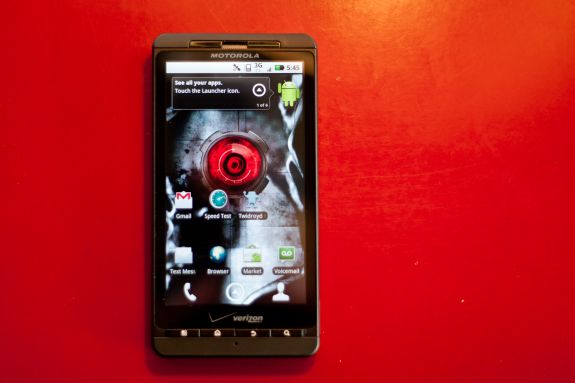
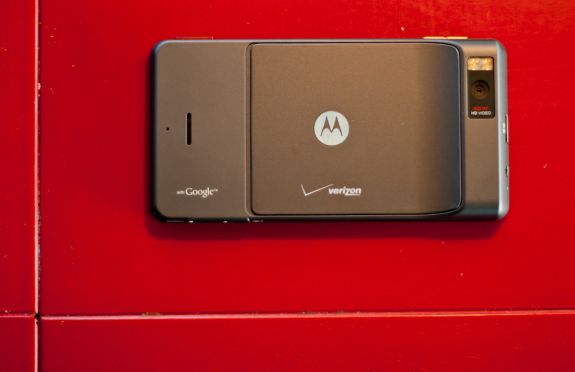
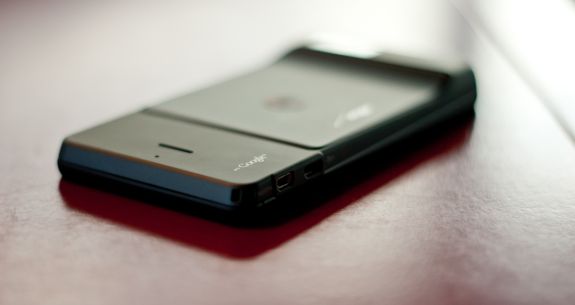
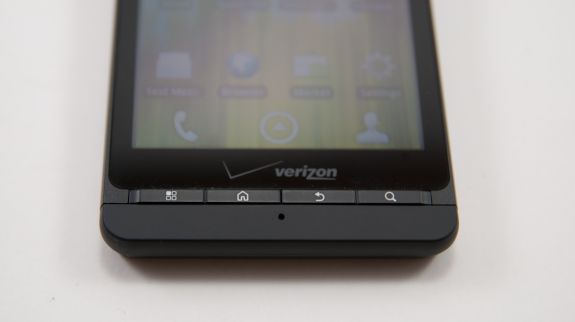


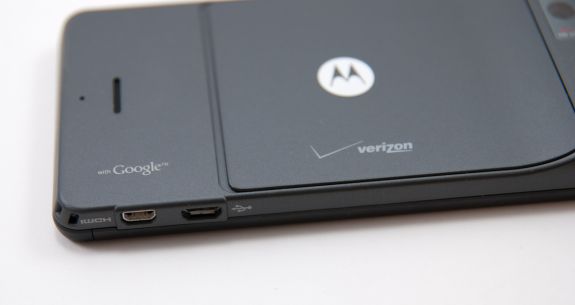
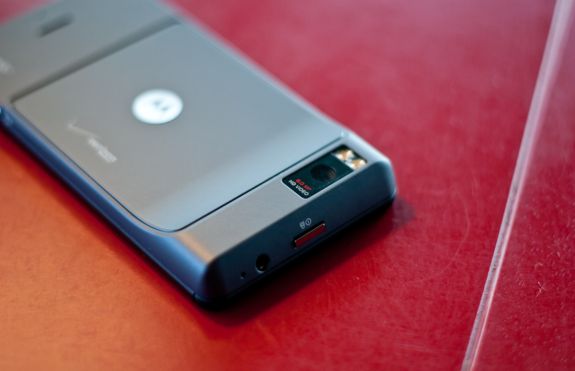
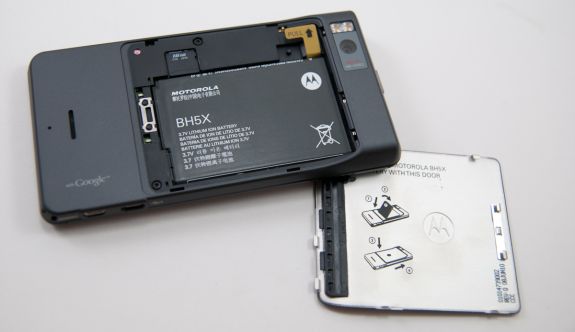









89 Comments
View All Comments
TareX - Thursday, July 22, 2010 - link
Why are all the Samsung Galaxy S phones missing from your charts and comparisons? I wanted to see how Hummingbird compared and how the Super AMOLED fared against their Droid X counterparts...strikeback03 - Tuesday, July 27, 2010 - link
Maybe because the first US version launched a day before the review went up, and they weren't sent a review sample.enealDC - Thursday, July 22, 2010 - link
Great job!Juniper Research - Friday, July 23, 2010 - link
Very interesting article... we have this week published a new report on smartphones and a free whitepaper is available to download here... http://www.juniperresearch.com/reports/next_genera...John Levett
Marketing Executive at Juniper Research
Homefries - Saturday, July 24, 2010 - link
First off, great review Brian.However, while you did a very thorough comparison of the Droid X to other Android devices, you barely mentioned the real competitor the Droid X has to stand up against: the iPhone 4.
Readers want to know if the Droid X is the best phone on the market - the whole market - not just the market subset dedicated to Android devices.
Like the majority of the tech media, your review furthers the notion readers belong exclusively to either the iOS camp or the Andriod camp. This is simply not true. Informed readers, like the ones that peruse Anandtech, want to buy one smartphone, regardless of any marketing slants, that is the best.
Your review of the Droid X should have helped us answer the question, "Should I buy the Droid X or the iPhone 4?" But, it did not.
strikeback03 - Tuesday, July 27, 2010 - link
Well, I think the conclusion in the iPhone article and some earlier Android articles applies, there is no "best" for everyone. Some people love Apple and the Apple way of life, some people won't touch it. As the iPhone is currently limited to AT&T, that is going to deter a lot of people. How large a pocket/bag you plan on carrying the phone in might make size differences more important to some than others. So while I am not one of the readers calling for no subjective opinions (it is interesting that FroYo feels significantly faster/different) I think it is still up to each buyer to decide what is most important to them.Electrofreak - Saturday, July 24, 2010 - link
Brian and Anand, are you sure you're using the correct information regarding the SoC in the Droid X? I believe it is a OMAP 3640, not a 3630, as the maximum recommended clock speed of the 3630 is described in numerous places across the net as being 720 MHz, while the max clock speed of the 3640 is described as 1 GHz. In addition, the max recommended clock speed of the 3430 in the Droid was 600 MHz, not 800.The information I cite above is widely available across the web... if you've got inside information the rest of us don't have, by all means let us know. But as someone who has written articles of my own on ARM SoCs and follows ARM industry news closely, I suspect that your data may not be 100% correct.
Regardless, I do have to thank you for writing some of the most informative hardware articles on the net. I appreciate it!
Electrofreak - Saturday, July 24, 2010 - link
...and I just found this: http://e2e.ti.com/blogs_/b/mobile_momentum/archive...So, per TI's blog it is the 3630... now we just need an explanation of the other info on the web that describes the 3630 as maxing out at 720 MHz.
Brian Klug - Monday, July 26, 2010 - link
Yeah, TI's documentation is a bit outdated. Anand tackled the SoC part, but the 3630 is indeed a 1 GHz part, it isn't the 3640 guaranteed. There was a lot of confusion online about it, but Anand got the official word. ;)I agree, back when I did my other OMAP 3 piece it was 720 MHz.
-Brian
Electrofreak - Saturday, July 24, 2010 - link
Looking forward to that Hummingbird review Brian. I hope you're able to dig up some info that I wasn't able to when I wrote my article (http://alienbabeltech.com/main/?p=17125) back in April.